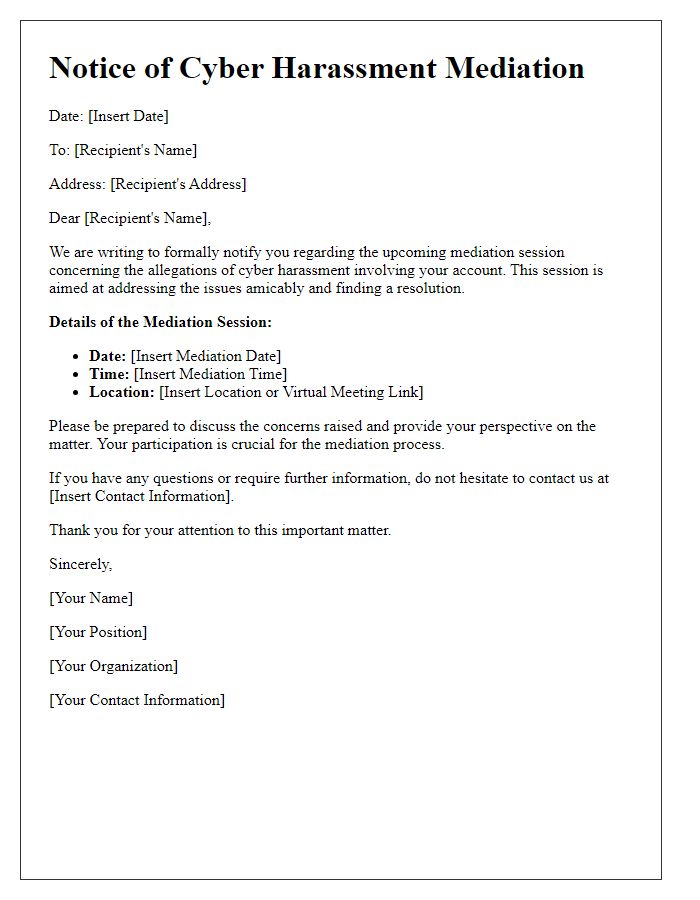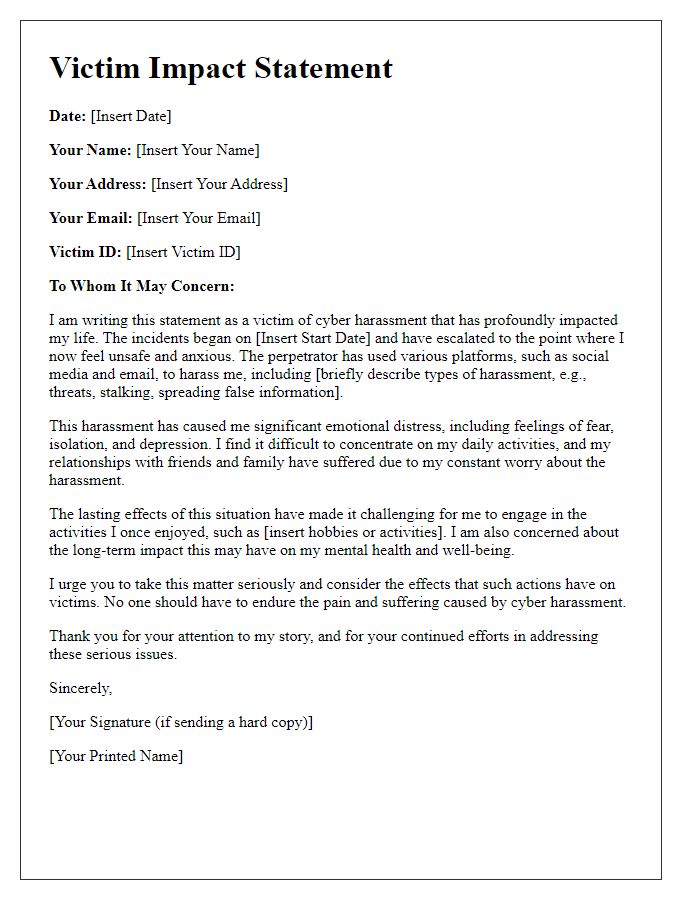In today's digital age, cyber harassment has sadly become all too common, affecting countless individuals across various platforms. If you or someone you know has been a victim, it's crucial to understand your rights and the legal actions that can be taken to protect yourself. This article aims to guide you through the essential steps to tackle cyber harassment effectively, ensuring you feel empowered and informed. So, buckle up as we delve deeper into this pressing issue and invite you to read more for a comprehensive approach to legal action against cyber harassment!

Personal Information & Contact Details
Cyber harassment incidents can lead to significant emotional and psychological stress for victims, often requiring legal action. Personal information, such as full name, home address (including city, state, and ZIP code), email address, and phone number provides a comprehensive means of identifying the victim. Contact details serve as crucial tools for communication with legal representatives, law enforcement, and support networks, ensuring that the victim receives timely advice and assistance. Documentation of specific incidents, including dates, times, and platforms used (such as social media sites), plays a vital role in framing a legal case. Establishing a clear record of harassment not only strengthens the victim's position but also aids in garnering evidence necessary for prosecution and protective measures against the perpetrator.
Statement of Incident & Evidence
Cyber harassment incidents often involve targeted online aggression, such as threats, bullying, or persistent unwanted communication. These acts may occur on platforms like social media (e.g., Facebook, Twitter) or messaging apps (e.g., WhatsApp, Instagram). The timeline of incidents can span weeks or months, with patterns of behavior emerging during this time. Documenting specific instances, including dates, times, and screenshots of messages, is critical in establishing a case. Evidence collection may also include email communications or witness testimonies. Local laws and regulations, such as anti-cyberbullying statutes in places like California or New York, provide a framework for legal recourse. Seeking assistance from organizations like the Cyber Civil Rights Initiative can also be beneficial during the process.
Legal Basis & Applicable Laws
Cyber harassment constitutes a serious offense under various legal frameworks, including the Computer Fraud and Abuse Act (CFAA), enacted in 1986 in the United States. This federal statute addresses unauthorized access and the use of computer systems, emphasizing the protection of individuals from online threats and harassment. Additionally, many states have enacted specific anti-cyberbullying laws, such as California's Education Code, which broadly defines bullying to include electronic forms of harassment. Victims can also seek recourse under tort law, particularly through emotional distress claims stemming from severe online harassment. Federal laws, such as the Violence Against Women Act (VAWA), further address the intersection of technology and harassment, providing victims increased legal protections. Cyber harassment claims may also invoke privacy laws, which vary by state but typically protect individuals from the unauthorized disclosure of personal information online, emphasizing the importance of consent and privacy in the digital age.
Demand for Action or Cease and Desist
Cyber harassment often involves threatening or abusive communications conducted through digital platforms, impacting mental health and safety. Victims may receive unwanted messages, social media posts, or emails containing defamatory content, leading to emotional distress and anxiety. Legal actions, such as Cease and Desist letters, aim to halt these harmful behaviors by informing the perpetrator of the consequences of their actions. Specific details, such as the date of incidents, communication methods, and jurisdictional law references, can strengthen the demand for accountability. Consulting an attorney can provide guidance on the appropriate legal framework, ensuring that victims receive the protection they deserve against cyber harassment.
Potential Consequences & Deadline for Response
Cyber harassment incidents can lead to significant legal repercussions under various laws, including the Cyberbullying Prevention Laws in several states. Victims may face emotional distress, harming mental health. Perpetrators may face civil penalties, including hefty fines and possible criminal charges, leading to incarceration, depending on the severity of the harassment. Documentation of incidents, including timestamps and screenshots, provides critical evidence. Victims should consider a deadline for formal response, typically ranging from 14 to 30 days, to initiate legal proceedings effectively. This timeframe encourages prompt action to address harassment while adhering to state statutes of limitations.
Letter Template For Cyber Harassment Legal Action Samples
Letter template of formal notification regarding cyber harassment legal action.

Letter template of legal representation for victims of online harassment.












Comments